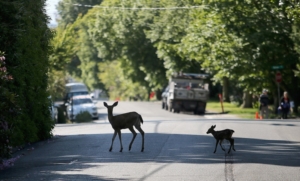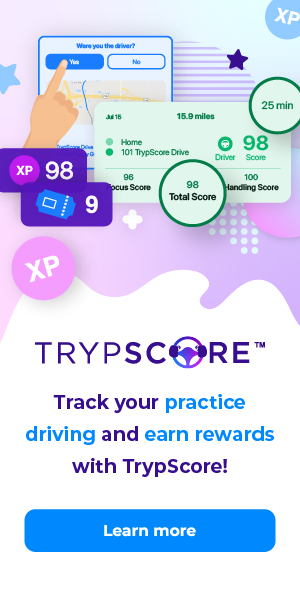Steve Wallace: Teaching the teachers about road safety

Identifying commonly used deer-crossing corridors is one way of alerting drivers of the reasonably predictable presence of deer, Steve Wallace writes.
We are not the only place where the deer population is listed as a quantifiable road hazard. Across North America, there is a resolve to warn drivers of not only the risk to life and limb for themselves and their passengers, but also the unintended damage to vehicles in these collisions with wildlife in both urban and rural areas. The deleterious deer hits often involve euthanizing the animal, if it survives the crash.
The recent Driving Schools Association of the Americas convention in Oklahoma delivered some telling statistics concerning wildlife collisions. Pennsylvania recorded 38,000 deer collisions last year. It is not an isolated statistic.
Every jurisdiction in North America is attempting to share information about successful programs to curb such highway confrontations. Identifying commonly used deer-crossing corridors is one way of alerting drivers of the reasonably predictable presence of deer and other ungulates in an area. Tracking deer hits and identifying probable crossing locations is a way of warning drivers of a possible conflict with them.
Fencing and other channelling efforts have yielded some success in rural areas. The successful use of deer whistles at higher speeds is claimed by many truckers and debunked by others. Freezing temperatures, combined with snow and sleet, clog the small space in the whistles in winter. The whistles work at speeds of 50 kilometers per hour and up. Deer usually stop and observe when they hear the high-frequency noise, audible to them alone, not humans. They only work well in temperate climates.
“Tell me and I may forget. Teach me, and I may remember. Involve me and I will learn.” This is the credo being espoused by many educational experts when teaching the new generation of teen learners. There are several techniques that provide the opportunity for involved and engaged learning. Best practices of leading driving-school owners, some third generation, were presented at the convention. Impairment goggles, mimicking various levels of alcohol consumption, can be fitted to each teen candidate in a classroom setting. This hands-on personal experience is recommended by driving school authorities. Simple physical tasks become difficult to impossible with the artificially induced impairment levels.
Distracted-driving educational units were also recommended for making an impression on new drivers in a classroom setting. There is nothing like having to perform physical and mental exercises, with little to no success, in front of your peers, in order to make an impression. It is informative and fun.
Dash cams are used by many vehicle drivers worldwide. Many driving schools in jurisdictions throughout North America and beyond have both outward- and inward-pointing cameras. These cameras provide a valuable teaching tool, especially for a review of lesson material and identification of corrective measures needed for improvement.
My national and international colleagues were both shocked and offended that the forward-pointing cameras, used as teaching tools or by any commercial business, are illegal in B.C. Privacy concerns trump educational value in this instance. Yet another Backward Columbia rule hoisted upon an unnotified and never-consulted driving-school industry. Perhaps our new attorney general may want to correct this travesty of a former government. One can only hope.
There were several examples of new technology being used. A simple hand action to raise or lower the temperature in a vehicle is meant to reduce the distraction of dash-mounted dials. Automatic driverless valet parking is now a reality. Who knew!
The upper levels of self-driving vehicle technology have not yet been realized. The self-driving modes have been delayed by some recent well-publicized mishaps. The usefulness of this planned automation, namely driverless cars and trucks, will likely be restricted to densely populated metropolitan core areas and long-haul transport in predictable weather.
Steve Wallace is the owner of Joan Wallace Driving School on Vancouver Island. He is a former vice-president of the Driving Schools Association of the Americas, a registered B.C. teacher and a University of Manitoba graduate.


